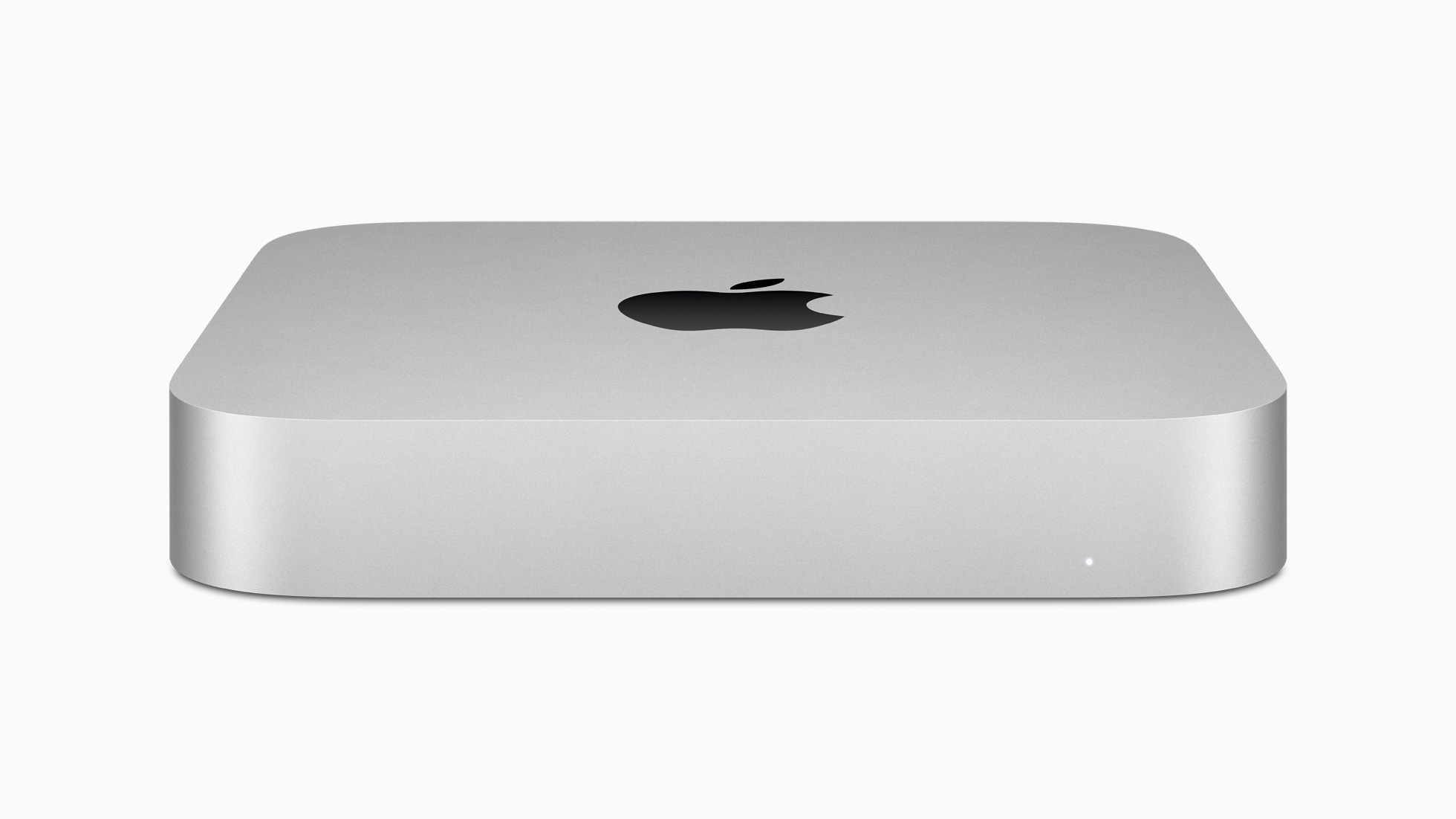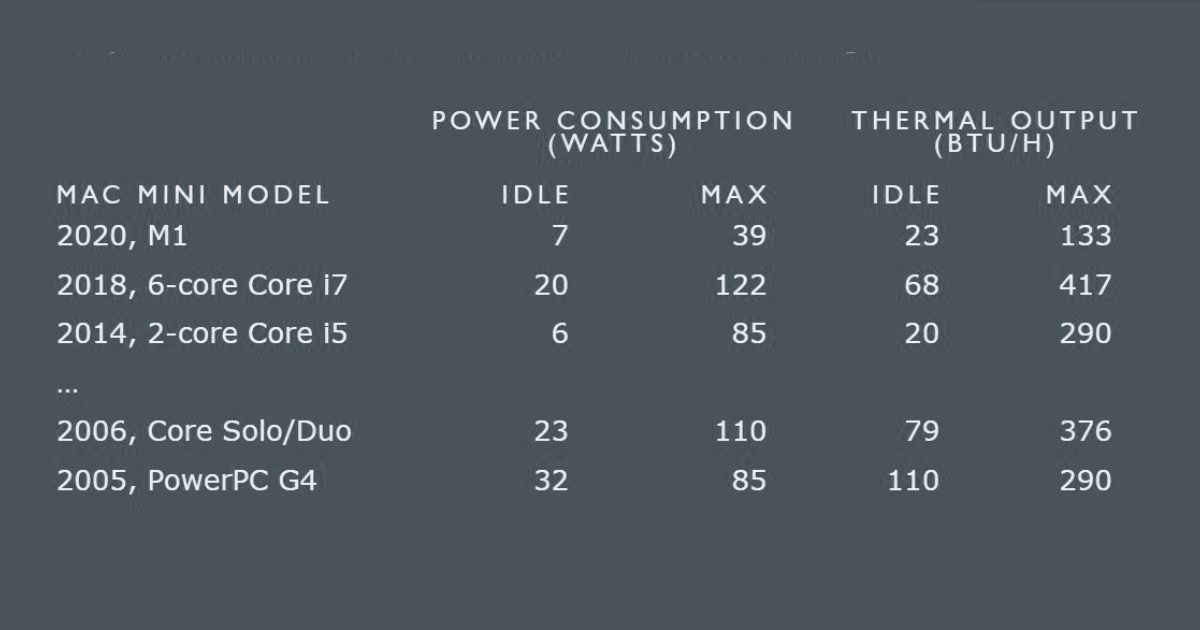Apple’s latest M1 Macs demonstrate just how inefficient Intel CPUs had become over the years while offering limited performance improvements. Apple’s custom M1 chip claims to deliver 3x faster CPU performance, 6x faster graphics, and longer battery life.
John Gruber of Daring Fireball recently took the official power consumption figures of all Mac minis starting from the 2005 PowerPC G4 variant and compared it to the M1 Mac mini. The power consumption and thermal output figure for the M1 Mac mini highlight how efficient Apple Silicon is than the Intel chips used by older models.

M1 Mac Mini vs. Intel CPUs
At idle, the 2020 Mac mini consumes 7W of power whereas 2018, 6-core Core i7 Mac mini consumes 20W of power. The 2014 2-core Core i5 model performed better at 6W. At maximum load, the M1 Mac mini requires 39W of power while the 2018 Core i7 Mac mini required 122W of power.

Gruber suggests that the difference in performance between the 2014 and 2018 models may reveal why there was a long gap between updates. According to Gruber, the Cupertino tech giant had been hoping to switch to its own custom made chip because Intel was not delivering the best performance, but the company was eventually forced to release an interim update due to delays.
“But then came the very well-regarded 2018 Mac Mini. It was still an important product in Apple’s lineup! But well-regarded or not, look at the thermals in the table above. The 2018 Mac Mini has three times the power consumption and thermal output of the new M1 Mac Mini — and much higher numbers than the 2014 Mac Mini models it replaced. It’s an outlier on the trendline. And keep in mind that the M1 Mac Mini is also a much more performant computer.
Apple does not like to talk about stuff like this, so we’re left to conjecture, but it’s not hard to look at this simple table of power consumption and thermal output and consider that those “gap years” in Mac desktop hardware — the Mac Mini in particular — were to a large extent the result of Intel’s chips running way too hot for Apple’s standards. And that in 2017, Apple bit the bullet and did the best they could with what Intel had to offer, realizing then that they needed another generation of Intel Macs (desktop and laptop) before Apple Silicon Macs would be ready.”
via Daring Fireball
Read More:
1 comment